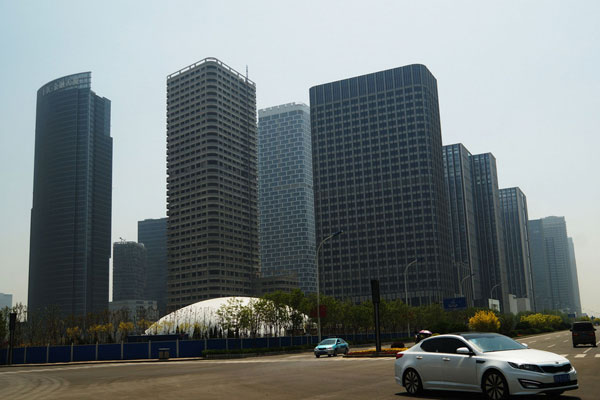Japan launches cargo craft for ISS resupply mission
Updated: 2015-08-19 22:32
(Xinhua)
|
|||||||||||
 |
|
A H-2B rocket carrying cargo craft for the International Space Station (ISS) called "Kounotori No.5" blasts off from the launching pad at Tanegashima Space Center on the Japanese southwestern island of Tanegashima, Kagoshima prefecture, southwestern Japan, in this photo taken by Kyodo August 19, 2015.[Photo/Agencies] |
TOKYO - Japan on Wednesday launched an unmanned cargo transfer spacecraft that will deliver supplies to the International Space Station (ISS).
The Japan Aerospace Exploration Agency (JAXA) and Mitsubishi Heavy Industries Ltd. -- Japan's space agency and the commercial operator of H-2B rocket -- launched the H-2 Transfer Vehicle " KOUNOTORI5" (HTV5) aboard the H-2B Launch Vehicle No.5 at 8:50 pm (1150 GMT) on Wednesday from JAXA's Tanegashima Space Center in Japan's southwestern Kagoshima prefecture.
The launch vehicle flew smoothly, and at about 15 minutes after liftoff, the separation of the HTV5 and the rocket was confirmed. The HTV will gradually approach the ISS.
The launch was originally scheduled for Aug. 16 but was delayed due to unfavorable weather conditions.
JAXA astronaut Kimiya Yui, a flight engineer for Expedition 44 and 45 aboard the ISS, has been assigned to manipulate the Space Station Remote Manipulator System (SSRMS) for the operation of capturing Kounotori5. "It is the first time for Japanese astronauts to capture the HTV," said JAXA.
Developed and built in Japan, the HTV5 known as "KOUNOTORI ( white stork)" is an unmanned cargo transfer spacecraft that delivers supplies to the ISS. HTV will deliver not only necessary daily commodities for the crew astronauts, but also experimental devices, samples, spare parts and other necessary research items to the ISS in orbit at an altitude of about 400 km and return with spent equipment, used clothing, and other waste material.
Currently, Japan, the United States, and Russia operate cargo transfers to the ISS. "Among the supply vehicles, KOUNOTORI serves as the backbone of ISS operations with its world-leading supply capacity of approx. 6 metric tons, and is the only space liner capable of delivering large items of hardware," said JAXA.
Wednesday's liftoff has been the fifth flight of HTV since the first Kounotori vehicle was launched in September 2009 with 4.5 metric tons of supplies for the ISS. The HTV5 delivers a total 5.5 metric tons of cargo to the ISS. Japan's last resupply flight to the ISS was made by HTV4 in August 2013, delivering 5.4 metric tons of cargo to the ISS.
By improving the way of loading of cargo, the HTV's loading capacity has gradually been increased. "The amount of loadable cargo of HTV5 has been increased up to 242 Cargo Transfer Bags ( CTBs) as compared to 208 CTBs during HTV1 mission, which is the increase of 34 bags and about 15 percent," said JAXA. "This allows the HTV to accommodate more packages such as water and system parts."
Japan wants to make continuous launches with at least four more HTV missions, according to media reports. The next Kounotori spacecraft, HTV6 is planned to be launched in 2016.
Earlier this year, Japan launched a backup information gathering satellite (IGS) with a radar reconnaissance payload and an IGS with an optical reconnaissance payload in February and March, separately.
Today's Top News
Man in yellow shirt is Bangkok bomber: Police
Leaders of France, Germany, Ukraine to meet on escalating violence
Bangkok bombing carried out by 'a network': police
German lawmakers back
Greek bailout
Insured losses from Tianjin blasts could reach $1.5 billion: Fitch
Chinese city salutes a very British hero with a statue
Beijing dismisses reports of Abe's China visit in September
Europe struggles to respond as migrants numbers rise threefold
Hot Topics
Lunar probe , China growth forecasts, Emission rules get tougher, China seen through 'colored lens', International board,
Editor's Picks

|

|

|

|

|

|






